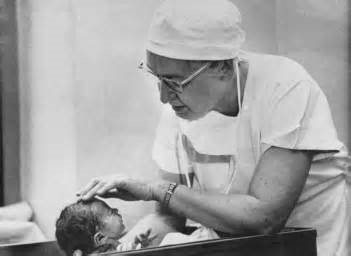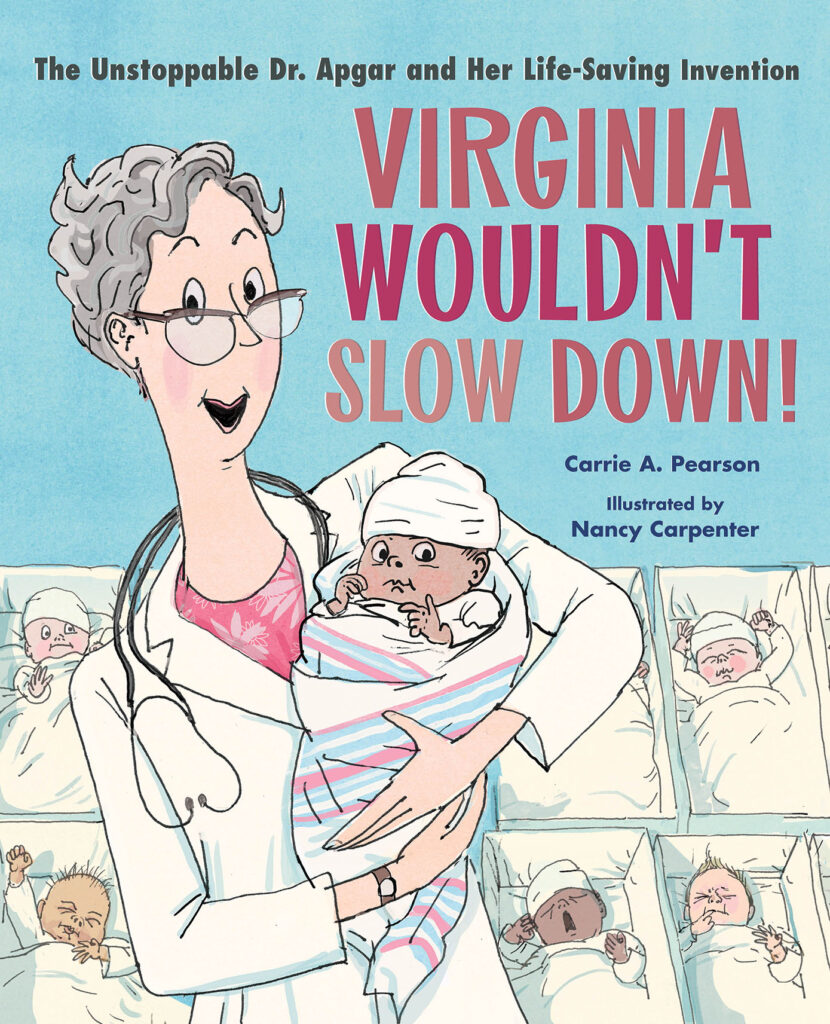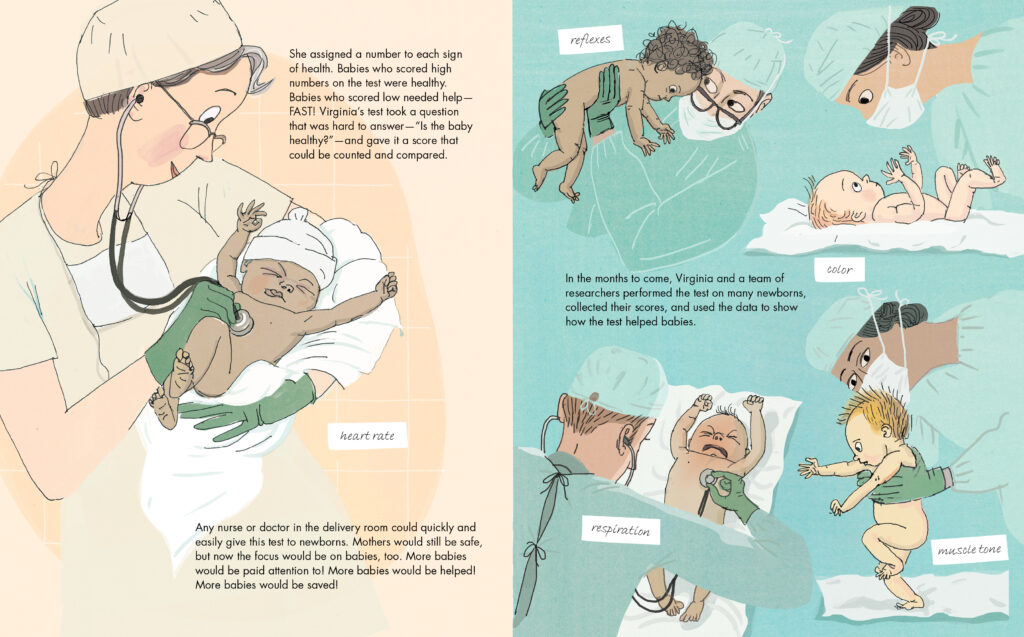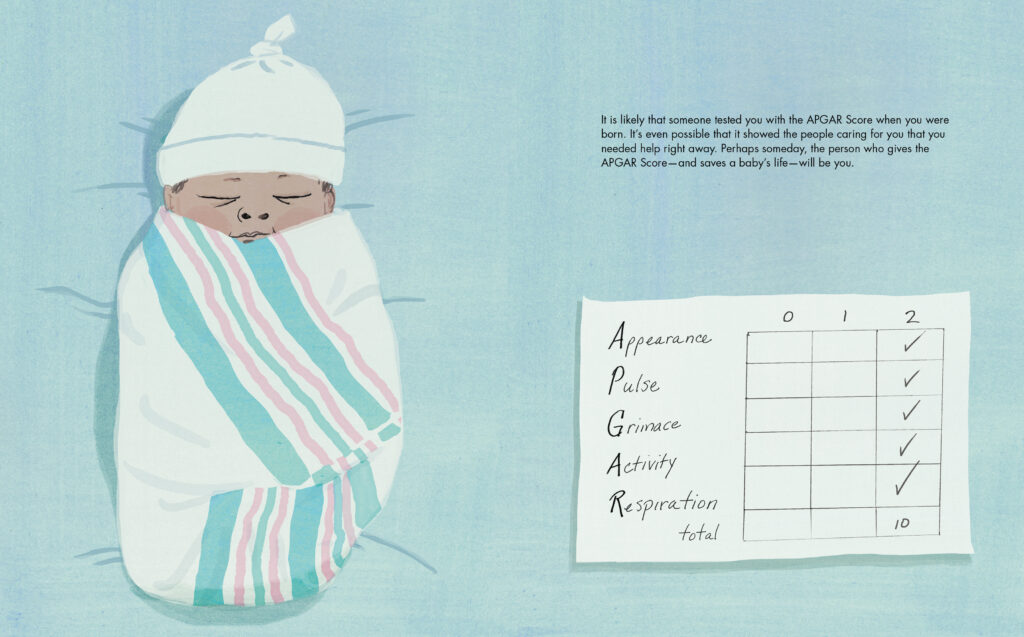GUEST BLOGGER CARRIE A. PEARSON
A picture book biography of medical luminary Dr. Virginia Apgar can prompt a bassinet full of interdisciplinary ideas to explore.
Understanding the APGAR score
In 1952, Dr. Virginia Apgar developed a test to assess newborns’ health quickly and objectively to counteract high infant mortality rates. This effective tool was later reworked as a mnemonic with her last name and is still used by healthcare professionals worldwide. The APGAR Score assesses five vital signs: Appearance, Pulse, Grimace, Activity, and Respiration. Each sign is scored on a scale from 0 to 2, with a maximum total score of 10.
Were you born after 1962? If so, chances are good your health was seen through Dr. Apgar’s eyes at birth. Little did she know the APGAR Score could become an educational powerhouse.
The APGAR score, an interdisciplinary approach
Begin by reading aloud the picture book biography Virginia Wouldn’t Slow Down! The Unstoppable Dr. Apgar and Her Life-Saving Invention pausing to reflect on the pages that show and describe the components of the APGAR Score.
Investigate several interdisciplinary curricular connections prompted by this picture book:
Science
Focus on the science behind the APGAR Score. Investigate the physiological importance of each component, such as skin coloration (Appearance), heart rate (Pulse), reflex response (Grimace), muscle tone (Activity), and breathing effort (Respiration). Engage students in discussions about the importance of these vital signs in determining a newborn’s overall health. Extra credit: If you can access stethoscopes, allow students to listen to their and others’ hearts and pulse points.
Technology
Use the internet to research how the technology around newborn health has evolved, starting from Dr. Apgar’s timeframe before the development of medical devices for infants or NICUs with monitors and other equipment. (The APGAR Score set the stage for neonatal health, including NICUs, because scoring necessitated paying attention to newborns.) Encourage students to explore how technology has influenced the accuracy of newborn health assessments.
Engineering
Challenge students to think like engineers as they design an APGAR Score for children their age. Task them with creating a similar model for essential signs of health that can be visually assessed and scored. Encourage creativity and problem-solving as students refine their designs to reflect the components of the APGAR Score.
Mathematics
Integrate math by analyzing and interpreting students’ APGAR Scores or hypothetical newborn data. Guide students in calculating total scores and studying the health implications. Make connections to other numbers-based health assessments like blood pressure, cholesterol, etc. Extra credit: Facilitate discussions on statistical analysis and the significance of trends in identifying problems. (Dr. Apgar used APGAR Score trends to identify infant health problems around anesthesia given to women during childbirth.)
ELA
Research additional biographical texts about Dr. Virginia Apgar and her contributions to neonatal medicine. Encourage students to write reflective essays imagining themselves as Dr. Apgar administering the APGAR Score and as themselves in a clinical setting. Have students create a mnemonic or acrostic for their names based on a healthcare topic of interest. Extra credit: build a poem around the topic using the acrostic.

Featured image credit: “Newborn” by Samovaari is licensed under CC BY-NC 2.0.
Carrie A. Pearson (BA, early childhood education) is a full-time word wrangler and literacy advocate. Her most recent nonfiction picture book release is Virginia Wouldn’t Slow Down: The Unstoppable Dr. Apgar And Her Life-Saving Invention (Norton Young Readers/W.W. Norton). Her first nonfiction middle grade launches fall ’25 (Lerner Publishing Group). Carrie would love to connect with you through her website, carriepearsonbooks.com, and on Instagram at carrieapearson.author.













Leave a Reply
Your email is safe with me.